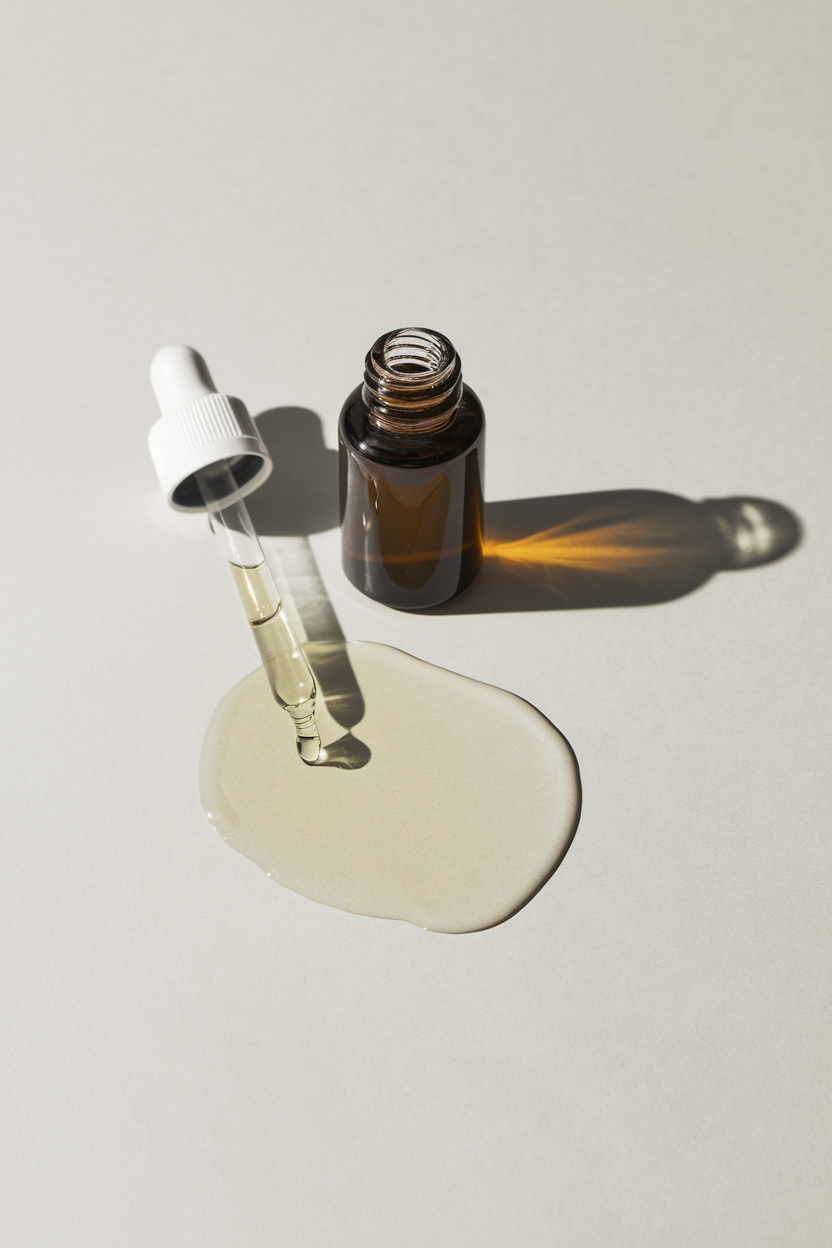BLUE LIGHT CARD DISCOUNTS available across all therapies and packages. Thank you NHS.
Holistic Skincare for Eczema: Building a Comprehensive Care Routine

Eczema, a skin issue that affects millions of people globally, is more than just a skin condition—it’s a multifaceted reflection of both internal and external imbalances. While internal factors like gut health, immune balance, stress, detoxification status, and nutrition are paramount, skin-level care remains an essential part of the healing puzzle. The skin is not just a passive barrier; it is a dynamic, immunologically active organ that constantly communicates with the rest of the body through pathways that include the gut-skin axis, nervous system, endocrine system, and immune responses. Nourishing the skin from the outside-in, alongside internal strategies, can help reduce the overall inflammatory burden, reinforce the body’s natural defences, restore skin integrity, and ease that frustrating flare cycle.
If you’ve got eczema, you probably know that it’s not just about itchy patches, dry skin and occasional irritation—it’s a whole skin saga. Managing eczema can feel like navigating a maze, with treatments, triggers, and flare-ups lurking around the labyrinth. Requiring relentless attention, care, hyper vigilance and an often tiring faff. Yet, with a carefully crafted, holistic strategy, eczema need not dominate your life. Through thoughtful, layered approaches, eczema can be managed in a way that promotes healing, supports skin health, and fosters a greater sense of well-being.
A truly effective eczema skin management plan incorporates multiple key elements: moisture retention, hydration, barrier support, microbiome balance, identification and elimination of topical triggers, and addressing the itch-scratch cycle. By understanding these aspects and their interplay, a comprehensive, sustainable skincare routine can be built to treat the underlying topical causes of eczema while alleviating its symptoms. Over time, this approach forms a long-term holistic strategy that ensures the time and money you spend investing in creams and balms, not only restores the skin but also improves overall health and quality of life.
The Genetic Foundations of Eczema
At the heart of eczema lies a compromised skin barrier, which struggles to retain moisture and protect against external irritants, allergens, and infections. This dysfunction is frequently tied to genetic factors, particularly mutations in the filaggrin gene. Filaggrin, a key protein in the skin, binds keratin fibers together in the outermost layer, the stratum corneum. This helps create a robust, cohesive barrier that retains moisture and protects against harmful substances. When the filaggrin gene is mutated, less filaggrin is produced, weakening the skin’s barrier function. The result is increased permeability, allowing moisture to escape and irritants to enter, exacerbating eczema symptoms.
Beyond filaggrin, genetic variations in immune response pathways also contribute significantly to eczema’s inflammatory processes. These genetic predispositions amplify the body’s inflammatory response, making eczema not only a skin issue but an immune imbalance. This combination of genetic factors, compounded by other systemic influences, is responsible for the hallmark symptoms of eczema—dry, irritated, and reactive skin. Understanding the genetic basis of eczema provides essential insight into its chronic nature and why it requires both external and internal interventions for effective management.
The Art of Moisturising: Emollients, Occlusives, and Humectants
Moisturisation is one of the cornerstones of eczema management. Eczema-prone skin is often dehydrated, which exacerbates dryness, itching, and irritation. However, moisturising is not as simple as slathering on any cream. To truly support the skin, it’s important to understand the different categories of moisturising agents and how each works.
EMOLLIENTS
Emollients are moisturising agents that soften and smooth the skin, helping to fill the gaps between skin cells. Ingredients such as oils, butters, and lipids improve skin texture and prevent cracking, which is a common issue for those with eczema. Emollients are crucial in softening rough, scaly patches and enhancing skin pliability, making them an essential component of any eczema skincare routine.
OCCLUSIVES
Occlusives form a protective layer over the skin, sealing in moisture and preventing water loss. These ingredients, such as beeswax and silicones, are particularly beneficial for very dry skin or during eczema flare-ups. By trapping moisture in the skin, occlusives help create an environment conducive to healing and recovery.
HUMECTANTS
Humectants, such as glycerin, hyaluronic acid, and aloe vera, draw water into the skin from both the environment and deeper layers of the skin. While they hydrate, they work most effectively when paired with occlusives or emollients to ensure that the moisture is locked in. Humectants can significantly enhance the hydration of eczema-prone skin, helping to restore its moisture balance.

Strengthening the Skin Barrier
The skin barrier serves as the body’s primary line of defence against environmental stressors. When functioning properly, it retains moisture, blocks irritants, and protects the skin from infection. A healthy skin barrier is composed of skin cells (the bricks) and lipids, such as ceramides, cholesterol, and fatty acids (the mortar) that hold the cells together. In eczema, however, these protective lipids are depleted or poorly structured, leading to a “leaky” barrier that allows moisture to escape and harmful substances to penetrate.
SUPPORT STRATEGIES:
- Use a broad spectrum of barrier repairing moisturisers that combine humectants, emollients, and occlusives to ensure comprehensive hydration and barrier repair.
- Choose products with key lipids like ceramides, cholesterol, and fatty acids, which mimic and help rebuild he skins own structure.
- Apply moisturisers frequently, especially after bathing, to lock in moisture and support skin repair.
- Avoid harsh soaps, foaming cleansers, and products that strip the skin’s natural oils, as these can exacerbate barrier dysfunction.
- Opt for pH-balanced, fragrance-free products to prevent irritation.
- Protect the skin from environmental stressors such as cold, wind, and chlorinated water, which can exacerbate dryness.
- Incorporate soothing botanicals such as calendula, marshmallow root, and aloe vera to calm inflammation and support the healing process. However, always patch test to filter out any personal potential allergens and triggers.
Skin Hydration: More Than Just Moisture
Eczema-prone skin is often chronically dehydrated, leading to a breakdown in the skin’s ability to retain moisture. Transepidermal water loss (TEWL) is significantly higher in individuals with eczema, contributing to the skin’s dryness and vulnerability. To support hydration, it’s important to think in layers when it comes to moisturiser. Hydration is not just about adding water, but about helping the skin retain it.
SUPPORT STRATEGIES:
- Apply moisturiser within three minutes of bathing to trap moisture before it evaporates.
- Layer your moisturising products for maximum effect: Begin with a hydrating gel or mist (e.g., aloe vera or rose water), followed by an occlusive (balm, oil, or thick cream) to seal in the moisture.
- Use a humidifier in dry or heated environments to prevent the skin from drying out.
- Avoid hot water when showering or bathing, as it can strip the skin of natural oils and worsen dehydration.
Supporting the Skin Microbiome
The skin microbiome, a vast and diverse community of bacteria, fungi, viruses, and other microorganisms, plays an integral role in maintaining skin health and immune regulation. In eczema, this balance is often disrupted, resulting in dysbiosis—a state where beneficial microbes are depleted and pathogenic organisms proliferate. These pathogens can worsen inflammation, damage the skin barrier, and increase itching and flare frequency.
Staphylococcus aureus, in particular, is found in higher numbers on eczema-prone skin and has been shown to increase inflammation and disrupt healing. Malassezia yeasts, which thrive in oily areas of the skin such as the scalp and face, can also trigger eczema flare-ups. Understanding these imbalances in the microbiome is essential for managing eczema.
SUPPORT STRATEGIES:
- Avoid harsh soaps, foaming cleansers, antibacterial and antiseptic products unless clinically indicated as they can wipe out beneficial bacteria and shift the skins pH unfavourably.
- Choose microbiome-friendly products containing prebiotics, postbiotics, or fermented ingredients to encourage the growth of beneficial bacteria.
- Use Gentle cleansers, antimicrobials or treatments that are not overly aggressive and don’t strip the skin:
- Thermal spring water
- Colloidal Oatmeal
- Manuka honey
- Green tea extract
- Fermented ingredients
- Botanical oils e.g black cumin seed or tamanu
- Zinc oxide
- Look for pH-balanced skincare, ideally around 4.5-5.5.
- When appropriate, under practitioner guidance, diluted ACV or vinegar soaks or sprays can help control Staph without disrupting the whole biome.
Identifying and Avoiding Topical Triggers
Eczema-prone skin is highly sensitive to a variety of irritants and allergens that can worsen symptoms, particularly when the skin barrier is already compromised. Many skin and personal care products contain hidden irritants or allergens that can significantly worsen eczema and/or trigger an immune response. What might be perfectly fine for someone without sensitive skin can cause stinging, redness, or flares in someone with eczema. Damaged skin absorbs chemicals more readily, increasing sensitivity to fragrances, preservatives, and surfactants. Even “natural” products can contain problematic essential oils or botanicals.
Reducing the number of ingredients in your skincare products can help identify which products work best and which one’s trigger flare-ups. It’s important to simplify your routine—the fewer ingredients, the easier it is to identify what works and what doesn’t.
SUPPORT STRATEGIES:
- Choose products labelled “hypoallergenic,” “for sensitive skin,” or “fragrance-free.” Be cautious with “unscented” products, as they may still contain masking fragrances.
- Patch testing new products is also a smart step, especially for reactive skin.
- Avoid common irritants such as:
- Fragrance (synthetic and natural)
- Essential oils
- Parabens and preservatives
- Alcohols and sulfates
- Switch to non-toxic laundry detergents that are free from fragrances and harsh chemicals.
- Be mindful of haircare products that may run onto the skin in the shower, as well as fabric softeners and metals (e.g., nickel in jewellery) that can irritate the skin.
Identifying and removing these topical triggers is a simple but powerful part of calming eczema. When the skin isn’t constantly being provoked by outside irritants, it has more space to repair and rebalance.
Soothing Inflammation with Topical Treatments
Natural, soothing agents can play a valuable role in calming inflammation and reducing itch in eczema-prone skin. The skin’s heightened immune response during flare-ups can benefit from gentle, calming botanicals that reduce inflammation, calm the itch and promote healing. Many botanical extracts have been shown to influence inflammatory pathways, reduce histamine activity, and support tissue repair.
SUPPORT STRATEGIES:
- Look for botanicals with well-established anti-inflammatory properties, such as:
- DIY remedies such as oatmeal baths, aloe vera masks, or honey and herbal-infused oils (e.g., chickweed, plantain) can also provide relief.
- Apply anti-inflammatory treatments consistently to break the itch-scratch cycle and support the skin’s recovery.
- Avoid overuse of essential oils and potent actives during flares.
These ingredients can be found in balms, oils, or creams, often combined in simple, nourishing formulas. The key is to avoid overly complex or active products—eczema-prone skin often responds better to calm, consistent care than to constant change or stimulation.
Itch + Scratch Cycle Management
Managing the itch-scratch cycle is one of the most crucial—and often most challenging—aspects of eczema care. When the skin itches, scratching offers short-term relief, but it breaks the skin barrier, invites in bacteria, triggers more inflammation, and ultimately worsens the flare. This sets up a vicious cycle where the more we scratch, the more we itch, and the harder it becomes for the skin to heal.
Itching is driven by immune and neurological factors, including histamine release, nerve hypersensitivity, and stress-induced signalling. Repeated scratching can also lead to lichenification and infection.
SUPPORT STRATEGIES:
- Moisturise frequently to soothe and hydrate, as dryness is a major itch trigger.
- Keep nails short and consider using cotton gloves or eczema sleeves at night
- Use anti-itch treatments such as menthol-based balms, chickweed cream, or zinc and calendula creams.
- Use cool compresses or wet wrap therapy to soothe intense itching. Applying moisturiser then wrapping damp bandages or clothing over the area—can be incredibly effective for reducing intense itching and calming inflammation.
Understanding that itch isn’t just a surface-level issue—it’s influenced by inflammation, nerve signalling, stress and even histamine—helps us create more compassionate, layered strategies to manage it. The goal isn’t just to stop scratching, but to make the skin feel calm enough that the urge begins to fade on its own.

Eczema Internal Ecosystem
We know that eczema is influenced by a complex internal ecosystem where factors such as diet, microbiome health, nutrient status, genetic predispositions, nervous system function, detoxification processes, histamine levels, environmental exposures, and emotional balance, all play a role.
By addressing these internal factors, eczema can be managed more effectively. Supporting gut health with probiotics, using anti-inflammatory herbs, and balancing histamine levels and optimising detoxification through diet and supplementation can all have profound effects on eczema’s course. Each topical point highlighted can and must be supported from an internal and well as external direction. For example, the skin barrier function and hydration levels can be supported by drinking plenty of water and consuming omega-3-rich foods. Additionally, techniques like breathwork and vagal nerve stimulation can help manage stress and support the nervous system, which in turn influences the skin.
Final Thoughts
Eczema management requires a holistic, multi-dimensional approach that integrates both external and internal strategies. By making skin care a key area of focus while addressing the body’s underlying imbalances, you can complement healing. By protecting and nurturing the skin, you reduce the immune burden, interrupt the flare cycle, and give the body space to restore balance. Each individual journey is unique, but with a consistent, informed and layered approach lasting, powerful relief is possible.
Product Recommendations for eczema prone skin and personal favourite probiotic skincare can be found here. If you’d like personalised and targeted protocols to support you in meeting your health goals, please contact me.